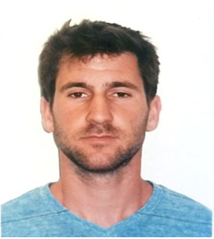Forfix
Cataract surgery is the most common surgical procedure worldwide, with 28 million operations performed annually. In the United States alone, approximately 3.5 million cataract surgeries are performed annually, with significant health and economic benefits.
Despite the success of cataract procedures, postoperative dislocation of intraocular lenses (IOL) occurs in 3% of cases, even after uncomplicated surgeries. Patients with predisposing conditions such as Marfan syndrome are particularly at risk, and incidence is expected to rise alongside global population growth.
Current solutions for IOL fixation after dislocation include scleral fixation, iris fixation, and anterior chamber IOL placement. However, these techniques:
- Are limited to specific centers and highly experienced surgeons.
- Lack standardization.
- Involve long, complex, and costly surgeries.
- Sometimes necessitate complete IOL exchange, leading to suboptimal refractive outcomes and increased procedural risks.
There is thus an unmet need for a standardized, simple, and safe solution for IOL fixation accessible to a broader range of surgeons.
Inventors
 Dr. Asaf Friehmann, Meir Medical Center
Dr. Asaf Friehmann, Meir Medical Center
 Dr. Alex Rubowitz, Meir Medical Center
Dr. Alex Rubowitz, Meir Medical Center
 Dr. Gal Harel, Meir Medical Center
Dr. Gal Harel, Meir Medical Center
Contact info

Avital Pritz, Director of Medical Devices and Digital Health
For further information please contact:
avital@mor-research.comFORFIX is a novel, biocompatible, microsurgical device designed for suture-less intraocular lens fixation. It offers a “one fixation technique fits all” solution, simplifying a complex surgical challenge.
Key features:
• A permanent, biocompatible clip.
• Compatible with all 25G pars plana vitrectomy (PPV) systems.
• Suitable for all IOL types, preserving the patient’s original lens for optimal refractive outcomes.
• Adjustable, reversible, and easy to use.
The FORFIX device streamlines the procedure:
• Avoids IOL exchange.
• Enables shorter and safer surgeries.
• Requires minimal training compared to traditional fixation techniques.
The global cataract surgery devices market was valued at approximately $9.1 billion in 2023. With 28 million cataract surgeries annually and up to 3% resulting in IOL dislocation, the potential market for FORFIX reaches approximately 1M cases per year.
FORFIX offers:
• Cost savings of approximately $1,123.5 per case, driven primarily by reduced operating room time (~30 minutes saved at $37.45 per minute).
• A scalable solution suitable for both developed and developing healthcare markets.
• Standardized and predictable outcomes, opening adoption potential for general ophthalmic surgeons, not just subspecialists.
• Prototype completed.
• Successful ex-vivo experiments performed.
• PCT Patent Application submitted.
• Regulatory strategy under development, with potential pathways identified as De-Novo or Orphan Device.
Next steps:
• Finalize in-vivo testing.
• Advance regulatory submissions.
• Prepare for initial clinical trials and commercial scaling.

